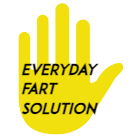How to fart a lot?
Farting, a natural and often humorous bodily function, is a topic that many approach with a mix of curiosity and amusement.
While politeness and social norms may discourage open discussions about flatulence, there are occasions when the urge strikes at the most inconvenient times.
In this lighthearted exploration, we aim to demystify the age-old question: How to fart when you want to?
Whether driven by comfort, personal preference, or the simple joy of embracing our human quirks, let’s embark on a journey to unravel the secrets of mastering this often involuntary yet perfectly normal bodily function.

Read: How to fart when you want to?
How to fart a lot?
Dietary Choices: Understanding the Impact on Flatulence
Diet plays a significant role in determining the frequency and intensity of flatulence.
Certain dietary choices can lead to increased gas production in the digestive system, contributing to the natural process of passing gas.
Here’s a closer look at how dietary factors influence flatulence:
Fiber-Rich Foods:
Foods high in fiber, such as beans, lentils, whole grains, and certain fruits and vegetables, are known to promote the production of gas.
While fiber is essential for a healthy digestive system, the fermentation process it undergoes in the colon can release gases like carbon dioxide and methane.
Complex Carbohydrates:
Complex carbohydrates, found in foods like broccoli, cabbage, and Brussels sprouts, contain compounds that gut bacteria break down, resulting in the release of gases.
These foods, while nutritious, can contribute to increased flatulence.
Sugars and Sweeteners:
Certain sugars and artificial sweeteners can be difficult for the digestive system to absorb fully.
This undigested sugar reaches the colon, where bacteria ferment it, producing gases. Examples include fructose (found in fruits) and sorbitol (an artificial sweetener).

Fatty Foods:
Fats slow down digestion, leading to food spending more time in the digestive tract.
This prolonged process can result in increased gas production as the gut bacteria work on breaking down the fats.
Dairy Products:
For individuals with lactose intolerance, dairy products can be a significant source of flatulence.
Lactose, the sugar found in milk and dairy, may go undigested in those with lactose intolerance, leading to bacterial fermentation and gas release.
also read: How To Fart Really Loud?
Carbonated Beverages:
Carbonated drinks, like sodas, sparkling water, and beer, introduce carbon dioxide into the digestive system, potentially causing more frequent gas.
The act of consuming carbonated beverages often involves swallowing air, especially when drinking from a can or through a straw.
This swallowed air becomes trapped in the digestive system, contributing to increased gas and bloating.
Hydration:
Hydration can influence gas production in the digestive system.
Drinking an ample amount of water helps maintain proper digestive function, aiding in the breakdown of food and reducing the likelihood of constipation.

While staying hydrated is essential for overall health, intentionally promoting excessive flatulence may not be advisable.
Understanding the impact of dietary choices on flatulence is crucial for maintaining digestive health.
While certain foods may contribute to gas production, it’s essential to strike a balance and ensure a varied and nutritious diet.
If excessive flatulence is a concern, consulting with a healthcare professional can help identify potential dietary triggers and provide personalized advice.
FAQs:
How can I fart more?
To increase flatulence, consider consuming gas-inducing foods like beans and cruciferous vegetables. Additionally, carbonated beverages may contribute to more frequent gas.
What makes you fart a lot?
Dietary choices, such as a high-fiber diet and certain carbohydrates, along with carbonated drinks, can lead to increased flatulence.
How can I pass gas fast?
Opt for activities that promote the release of trapped gas, like walking or gentle exercises. Changing your body position can also help ease the passage of gas.
How can I fart longer and louder?
While individual variations exist, factors like swallowing air, consuming gas-producing foods, and having a relaxed anal sphincter can contribute to longer and louder flatulence.
Conclusion
In conclusion, mastering the art of controlled flatulence can be a liberating and amusing endeavor. We’ve explored various strategies and tips to navigate this delicate yet natural aspect of our biology.
So, whether you’re aiming for discretion or embracing the humor in the moment, experimenting with these techniques might just add a touch of control to an otherwise uncontrollable bodily function.
In essence, understanding “How to fart when you want to?” offers a blend of practicality, humor, and a dash of self-awareness to our everyday lives.



